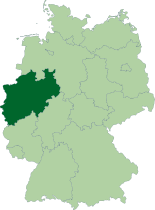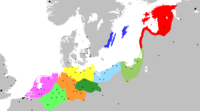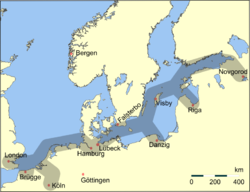Münster
| Münster | |
 |
|
 |
|
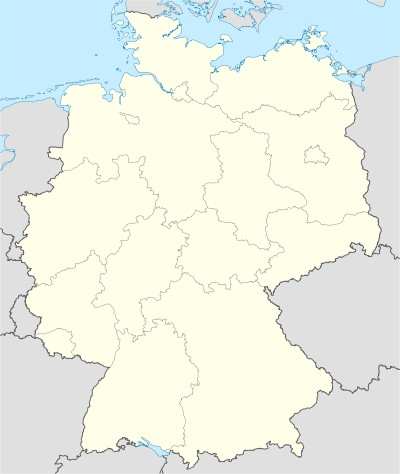 Münster
|
|
| Coordinates | |
| Administration | |
| Country | Germany |
|---|---|
| State | North Rhine-Westphalia |
| Admin. region | Münster |
| District | Urban district |
| City subdivisions | 6 |
| Lord Mayor | Markus Lewe (CDU) |
| Governing party | None (After 2009 local elections, neither did a party secure a majority of seats nor did any permanent coalition of parties emerge. Party "alliances" occur, but only on an issue-to-issue basis) |
| Basic statistics | |
| Area | 302.89 km2 (116.95 sq mi) |
| Elevation | 60 m (197 ft) |
| Population | 275,543 (31 December 2009)[1] |
| - Density | 910 /km2 (2,356 /sq mi) |
| Founded | 793 |
| Other information | |
| Time zone | CET/CEST (UTC+1/+2) |
| Licence plate | MS |
| Postal codes | 48143–48167 |
| Area codes | 0251 02501 (Hiltrup, Amelsbüren) 02506 (Wolbeck, Angelmodde) 02533 (Nienberge) 02534 (Roxel) 02536 (Albachten) |
| Website | www.muenster.de |
Münster (German pronunciation: [ˈmʏnstɐ] (![]() listen)) is an independent city in North Rhine-Westphalia, Germany. It is located in the northern part of the state and is considered to be the cultural centre of the Westphalia region. It is also capital of the local government region Regierungsbezirk Münster. The city is best known as the location of the Anabaptist rebellion during the Protestant Reformation, as the site of the signing of the Treaty of Westphalia ending the Thirty Years' War in 1648, and as the bicycle capital of Germany.
listen)) is an independent city in North Rhine-Westphalia, Germany. It is located in the northern part of the state and is considered to be the cultural centre of the Westphalia region. It is also capital of the local government region Regierungsbezirk Münster. The city is best known as the location of the Anabaptist rebellion during the Protestant Reformation, as the site of the signing of the Treaty of Westphalia ending the Thirty Years' War in 1648, and as the bicycle capital of Germany.
Münster gained the status of a Großstadt (major city) with more than 100,000 inhabitants in 1915. Currently there are around 270,000 people living in the city, with about 48,500 students, only some of whom are recorded in the official population statistics as having their primary residence in Münster.
Münster's economy is mainly based on service companies and public administration. Münster is also the seat of eight universities and colleges as well as of important courts such as the constitutional court and the higher administrative court for North Rhine-Westphalia.
The city was founded in 793 by Frisian Ludger, who was consecrated as the first bishop of the Münster diocese in 805. His successors held power over the largest clerical territory within the Holy Roman Empire until 1803.
Contents |
History
In 793 Charlemagne sent out as missionary the Frisian Liudger (later canonized) to convert the Saxons with whom he had been battling, offering as headquarters his recently demolished Frankish stronghold of Mimigernaford ("ford over the Aa river"), at the crossroads of the road from Cologne and the road to Frisia. Liudger was a product of Utrecht and the York school of Ethelbert, which produced many of the clerics who served in Charlemagne's chancelry. He built his church and cloister on the right bank of the Aa, on the height called the Horsteberg: it was the monastery ("monasterium") from which Münster derives its name. In 805 Liudger travelled to Rome to be ordained the first bishop of Münster, and soon founded a school (The Gymnasium Paulinum is believed to have been founded as the monastery school in 797). The combination of ford and crossroad, marketplace, episcopal administration center, library and school, established Münster as an important center.[2]
In the Middle Ages Münster was a leading member of the Hanseatic League.

In 1534 the Anabaptists (specifically the Melchiorites), led by John of Leiden, took power in the Münster Rebellion and founded a democratic proto-socialistic state. They claimed all property, burned all books except the Bible, and called it the "New Jerusalem". John of Leiden believed he would lead the elect from Münster to capture the entire world and purify it of evil with the sword in preparation of Jesus's Second Coming and the beginnings of a New Age. However, the town was recaptured in 1535; the Anabaptists were tortured to death, their corpses were exhibited in cages, which can still be seen hanging on the Tower of St. Lambert's steeple.
The signing of the Peace of Westphalia of 1648 at Münster and Osnabrück ended the Thirty Years' War and Eighty Years' War and was one of the foundations upon which modern Europe was built. It also guaranteed the future of the prince-bishop and the diocese; the area was to be exclusively Roman Catholic.
In 1780 the University of Münster (today called "Westphalian Wilhelms-University", WWU) was established, now a major European centre for excellence in education and research with large faculties in the arts, humanities, theology, sciences, business and law. Currently there are about 40,000 undergraduate and postgraduate students enrolled. In 1802 Münster was conquered by Prussia during the Napoleonic Wars. It became the capital of the Prussian province of Westphalia. A century later in 1899 the city's harbour started operations when the city was linked to the Dortmund-Ems Canal. With the spread of radio technology, in 1924 the radio and television organisation Westdeutscher Rundfunk (WDR) was set up in Münster's harbour area.

World War II
The Bishop of Münster in the 1940s was Cardinal Clemens August Graf von Galen, one of the most prominent critics of the Nazi government. In retaliation for his success (The New York Times described Bishop von Galen as "the most obstinate opponent of the National Socialist anti-Christian program[3]), Münster was heavily garrisoned during World War II and five large complexes of barracks are a still resented feature of the city. Münster was the headquarters (Hauptsitz) for the 6th Military District (Wehrkreis) of the German Wehrmacht, under the command of Infantry General (General der Infanterie) Gerhard Glokke. Originally made up of Westphalia and the Rhineland, after the Battle of France it was expanded to include the Eupen - Malmedy district of Belgium. The headquarters controlled military operations in Münster, Essen, Düsseldorf, Wuppertal, Bielefeld, Coesfeld, Paderborn, Herford, Minden, Detmold, Lingen, Osnabrück, Recklinghausen, Gelsenkirchen, and Cologne. Münster was the home station for the VI and XXIII Infantry Corps (Armeekorps), as well as the XXXIII and LVI Panzerkorps. Münster was also the home of the 6th, 16th and 25th Panzer Division; the 16th Panzergrenadier Division; and the 6th, 26th, 69th, 86th, 106th, 126th, 196th, 199th, 211th, 227th, 253rd, 254th, 264th, 306th, 326th, 329th, 336th, 371st, 385th, and 716th Infantry Divisions (Infanterie-division).
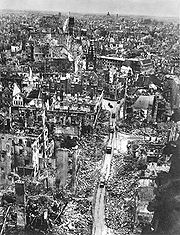
A secondary target of the Oil Campaign of World War II, Münster was bombed on October 25, 1944 by 34 diverted B-24 Liberators during a mission to a nearby primary target, the Scholven/Buer synthetic oil plant at Gelsenkirchen. About 91% of the Old City and 63% of the entire city was destroyed by Allied air raids.[4] In the 1950s the Old City was rebuilt to match its pre-war state, though many of the surrounding buildings were replaced with cheaper modern structures. It was also for several decades a garrison town for the British forces stationed in West Germany.
Postwar period
From 1974 onward, the city was the residence of the American artist Moondog, an eccentric individual who idolized postwar Germany. In 2003, Münster hosted the Central European Olympiad in Informatics. In 2004, Münster won an honorable distinction: the LivCom-Award for the most livable city in the world with a population between 200,000 and 750,000.[5] For more information about the honour, see the leaflet (.pdf) and the 10-minute DivX coded film: the 48mb-version or the 87mb-version from the official Münster-homepage. In a nutshell, Münster is famous and liked for its bicycle friendliness and for the student character of the city that is due to the influence of its university, the Westfälische Wilhelms Universität Münster.
Geography
Geographical position
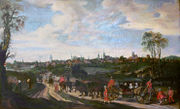
Münster is situated on the river Aa, approximately 15 km south of its confluence with the Ems in the Westphalian Bight, a landscape studded with dispersed settlements and farms, the so called "Münsterland". The Wolstonian sediments of the mountain ridge called "Münsterländer Kiessandzug" cross the city from north to south. The highest elevation is the Mühlenberg in the northwest of Münster, 97 metres above sea level. The lowest elevation is at the Ems with 44 m above sea level. The city center is60 m above sea level, measured at the Prinzipalmarkt in front of the historic city hall.
The Dutch city of Enschede is about 65 km northwest of Münster. Other major cities nearby include Osnabrück, about 44 km to the north, Dortmund, about 61 km to the south, and Bielefeld, about 62 km to the east.
Münster is one of the 42 agglomeration areas and one of the biggest cities of Germany in terms of acreage. But this includes substantial sparsely populated, agrarian districts which were formerly separate local government areas but were amalgamated in 1975. Thus nearly half the city's area is agricultural, resulting in a low population density of approximately 900 inhabitants per km².

Moreover, the built-over area of the city is relatively large, because the buildings are smaller compared with other cities of this size: there is a high ratio of one-family houses and mansions. There are few high-rise buildings and no skyscrapers. Nevertheless the population density reaches about 15,000 inhabitants per km² in the city center.[6] Calculating the population density based on the actual populated area results in approximately 2890 inhabitants per km².[7]
The urban area of Münster of 302.91 km² is distributed into 57,54 km² covered with buildings, 0.99 km² are used for maintenance and 25.73 km² for traffic areas, 156.61 km² for agricultural and recreational purposes, 8.91 km² are covered with waterbodies, 56.69 km² is used by forests and 6,23 km² is used for other purposes.[8] The perimeter has a length of 107 km, the largest extend of the urban area in north south direction is 24.4 km, in east west direction 20.6 km.[9]
Climate
A well known saying in Münster is "Entweder es regnet oder es läuten die Glocken. Und wenn beides zusammen fällt, dann ist Sonntag" ("Either it rains or the church bells ring. And if both occur at the same time, it's Sunday."), but in reality the rainfall with approximately 758 mm per year is close to the average rainfall in Germany.[10] The impression of Münster as a rain-laden city depends not on the absolute amount of rainfall but on the above-average number of rainy days with relatively small amounts of rainfall. The average temperature is 9.4 °C with approximately 1500 sun hours per year.[10] In terms of this figure, Münster is in the bottom fifth in comparison with other German cities. The winter in Münster is fairly mild and snow is rare. The temperature during summertime meets the average in Germany.
| Climate data for Münster | |||||||||||||
|---|---|---|---|---|---|---|---|---|---|---|---|---|---|
| Month | Jan | Feb | Mar | Apr | May | Jun | Jul | Aug | Sep | Oct | Nov | Dec | Year |
| Average high °C (°F) | 3 (37) |
4 (39) |
8 (46) |
13 (55) |
18 (64) |
21 (70) |
22 (72) |
22 (72) |
19 (66) |
14 (57) |
8 (46) |
4 (39) |
13 (55) |
| Average low °C (°F) | -2 (28) |
-2 (28) |
0 (32) |
3 (37) |
7 (45) |
10 (50) |
12 (54) |
12 (54) |
9 (48) |
6 (43) |
2 (36) |
-1 (30) |
4.6 (40.3) |
| Precipitation mm (inches) | 65 (2.56) |
48 (1.89) |
60 (2.36) |
50 (1.97) |
64 (2.52) |
74 (2.91) |
67 (2.64) |
66 (2.6) |
63 (2.48) |
54 (2.13) |
71 (2.8) |
77 (3.03) |
758 (29.84) |
| Source: [10][11] | |||||||||||||
Adjacent cities and districts
Münster borders on following cities and municipalities, named clockwise and beginning in the northwest: Altenberge and Greven (District of Steinfurt), Telgte, Everswinkel, Sendenhorst and Drensteinfurt (District of Warendorf), as well as Ascheberg, Senden and Havixbeck (District of Coesfeld).
City boroughs
According to § 1 of the main constitution of Münster, the city is divided into six administrative districts (Stadtbezirke). These are "Mitte" (Middle), "Nord" (North), "Ost" (East), "West", "Süd-Ost" (South-East) and "Hiltrup". Each district is represented by a council of 19 representatives elected at each local election. Heading each council is the district mayor, or Bezirksvorsteher. Further, every district is subdivided into residential quarters (Wohnbereiche). This official term, however, is not used in common speech, as there are no discrete definitions of the individual quarters. The term "Stadtteil" is used instead, mainly referring to the incorporated communities. The districts are also divided into 45 statistical districts.
The following list names each district with its residential and additional quarters according to the constitution. These are the official names, which partly differ from the usage in common speech.[12]
_Stadtbezirke.png)
- Mitte:
- Kernbereich (Center)
- Nord:
- Coerde
- Kinderhaus
- Sprakel with Sandrup
- Ost:
- Dyckburg, consisting of Mariendorf and Sudmühle
- Gelmer with Gittrup
- Handorf with Kasewinkel, Kreuzbach, Laer, Dorbaum and Verth on the left bank of the Ems and Werse
- Mauritz-Ost and Mondstraße, combined better known as St. Mauritz
- West:
- Albachten
- Gievenbeck
- Mecklenbeck
- Nienberge with Häger, Schonebeck and Uhlenbrock
- Roxel with Altenroxel and Oberort
- Sentruper Höhe
- Süd-Ost:
- Angelmodde with Hofkamp
- Gremmendorf with Loddenheide
- Wolbeck
- Hiltrup:
- Amelsbüren with Sudhoff, Loevelingloh and Wilbrenning
- Berg Fidel
- Hiltrup
The center can be subdivided into the city districts which have evolved historically, whose borders are not always clearly defined. Among these are Aaseestadt, Erphoviertel, Geistviertel, Hansaviertel, Herz-Jesu-Viertel, Kreuzviertel, Kuhviertel, Mauritzviertel, Pluggendorf, Rumphorst, Südviertel, Uppenberg, and the Zentrum Nord.
Transport
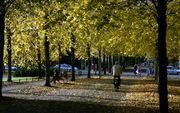
Münster is often called the bicycle capital of Germany. Bicycles, with 37.6 percent of all traffic, constitute a plurality of all traffic in Münster.[13] The city maintains an extensive network of bicycle-only pathways and wide sidewalks with designated pedestrian/cycling lanes.[14] It has a station on the Wanne-Eickel–Hamburg railway.
Demographics
Münster has approximately 270,000 inhabitants, and in addition more than 10,000 have their secondary residence in the city. About 9% are resident aliens. The rate of unemployment was 6.3% in December 2007.[15] Of the approximately 130,000 employees subject to social insurance contribution more than 80% work in the tertiary sector, about 17% work in the secondary sector and 1% work in the primary sector.[16] The average age of Münster's residents was 40.0 years in 2006.[17] The life-expectancy in Münster is 76.3 years for males and 83.1 years for females.
Main sights
- St. Paul's Cathedral, built in the 13th century in a mixture of late Romanesque and early Gothic styles. It has been completely restored after WWII damage. It includes an astronomical clock of 1540, adorned with hand-painted zodiac symbols, which traces the movement of the planets, and plays a Glockenspiel tune every noon.
- The Prinzipalmarkt, the marketplace in the city centre with the Gothic town hall (14th century) in which the Peace of Westphalia treaty which put an end to the Thirty Years' War was signed in 1648.
- St Lambert's Church (1375), with three cages hanging from its tower above the clock face. In 1535 these cages were used to display the corpses of Jan van Leiden and other leaders of the Münster Rebellion, who promoted polygamy and renunciation of all property.
- The Schloss (palace), built in 1767–87 as residence for the prince-bishops by the Baroque architect Johann Conrad Schlaun and Wilhelm Ferdinand Lipper. Now the administrative centre for the University.
- The Botanischer Garten Münster, a botanical garden founded in 1803.
- "Münster Arkaden" (2006), new shopping centre between Prinzipalmarkt and the Pablo Picasso Museum of Graphic Art.
- The fortress "Zwinger", build 1528. Used from the 18th to the 20th century as a prison. During World War II, the Gestapo used the "Zwinger" also for executions.
- "Krameramtshaus" (1589), an old guild house, which housed the delegation from the Netherlands during the signing of the Peace of Westphalia.
- Signal-Iduna Building (1961), the first high-rise building in Münster.
- LVM-Building, high-rise building near the Aasee.
- LBS-Building, location of Münsters first zoo. Some old structures of the former zoo can be found in the park around the office building. Also the "Tuckesburg", the strange looking house of the zoo-founder, is still intact.
- "Cavete", the oldest academic pub in Münster
- Haus Rüschhaus (1743–49), a country estate situated in Nienberge, built by Johann Conrad Schlaun for himself
- Stadthaus (1773)
- Erbdrostenhof (1749–53), a Baroque palace, also built by Schlaun
- Clemenskirche (1745–53), a Baroque church, also built by Schlaun
- Westphalian State Museum of Art and Cultural History
- University bible museum
- City Museum ("Stadtmuseum"), exhibition of a large collection showing the political and cultural history of the city from its beginning up to present, housed by a converted former department store
- University Mineralogical Museum
- Westphalian Horse Museum ("Hippomax")
- Mühlenhof open-air museum, depicting a typical Westphalian village as it looked centuries ago
- Westphalian Museum for Natural History, state museum and planetarium
- West Prussian State Museum ("Drostenhof Wolbeck")
- Museum of Lacquer Art (founded and operated by the company BASF Coatings)
- Pablo Picasso Museum of Graphic Art, the only museum devoted exclusively to the graphic works of Pablo Picasso
Scientific education and research
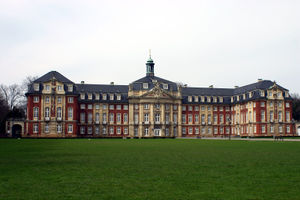
- University of Münster (Westphalian Wilhelms-University (WWU))
- University of Applied Sciences Münster (Fachhochschule Münster)
- University of Applied Sciences for Public Administration (Fachhochschule für öffentliche Verwaltung Münster)
- CeNTech - Center for Nanotechnology
- European Research Center for Information Systems (ERCIS)
- Max Planck Institute for Molecular Biomedicine
- University of the German Police (Hochschule der Polizei)
- University of Arts Münster (Kunstakademie Münster)
- Catholic University of Applied Sciences Münster (Katholische Fachhochschule Münster)
- Army NCO College (Unteroffizierschule des Heeres)
- about 92 Schools of primary and secondary education, many with international partnerships
Twin cities
Münster is twinned with the following places:[18]
 Fresno, USA
Fresno, USA Orléans, France
Orléans, France York, United Kingdom
York, United Kingdom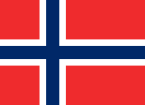 Kristiansand, Norway
Kristiansand, Norway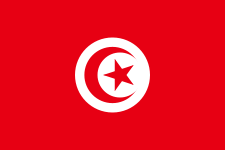 Monastir, Tunisia
Monastir, Tunisia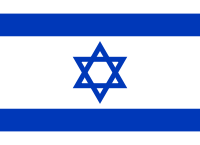 Rishon LeZion, Israel
Rishon LeZion, Israel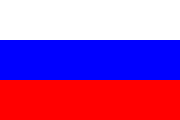 Ryazan, Russia
Ryazan, Russia Mühlhausen, Germany
Mühlhausen, Germany Lublin, Poland
Lublin, Poland
See also
- Munster Province, Republic Of Ireland
- CeNTech
- Fernmeldeturm
- Muenster, Texas (USA)
- Neaera (band)
References
- ↑ "Amtliche Bevölkerungszahlen" (in German). Landesbetrieb Information und Technik NRW. 31 December 2009. http://www.it.nrw.de/statistik/a/daten/amtlichebevoelkerungszahlen/index.html.
- ↑ "kirchensite.de - Vita des heiligen Liudgers - Die Anfänge des Bistums Münster:". Kirchensite.de. http://www.kirchensite.de/index.php?myELEMENT=78003. Retrieved 2008-11-18.
- ↑ [1]
- ↑ [2]
- ↑ "LivCom website, page for 2004 awards.". http://www.livcomawards.com. http://www.livcomawards.com/previous-winners/2004.htm. Retrieved January 27, 2010.
- ↑ Stadt Münster – Amt für Stadtentwicklung, Stadtplanung, Verkehrsplanung: Map of population density in the statistical areas, page 2
- ↑ Regional statistics for NRW of Landesamt für Datenverarbeitung und Statistik Nordrhein-Westfalen
- ↑ Statistics for 2006 of the city of Münster, Seite 18
- ↑ Münster from A–Z; Information by Münster Marketing
- ↑ 10.0 10.1 10.2 "Monthly average temperatures, rainfall, and sunshine for Münster, DE.". http://kli.uni-muenster.de. http://kli.uni-muenster.de/de/weather/climate/index.html. Retrieved January 27, 2010.
- ↑ "Monthly High/Lows for Münster, Germany.". http://www.holidaycheck.de. http://www.holidaycheck.de/klima-wetter_Muenster-ebene_oid-id_11030.html. Retrieved January 27, 2010.
- ↑ Main constituation of the city of Münster of December 21, 1995 – p. 13f.
- ↑ Stadt Münster: Bicycling in Münster
- ↑ Stadt Münster Amt für Stadtenwicklung, Stadtplanung, Verkehrsplanung: (German) Münster office for planning and transportation
- ↑ Maik-Torsten Schade, Klaus Steinhauer. "Statistics of Bundesagentur für Arbeit". Pub.arbeitsamt.de. http://www.pub.arbeitsamt.de/hst/services/statistik/000000/html/start/karten/aloq_aa_88.html. Retrieved 2008-11-18.
- ↑ Statistics for 2006 of the city of Münster, page 95
- ↑ Statistics for 2006 of the city of Münster, page 54
- ↑ http://www.muenster.de/stadt/partnerstaedte/index.html
External links
Sights
- City's official homepage (German)
- English page of Münster All-Weather Zoo (English)
- Münster Zoo at Zoo-Infos.de (English)
Images
- Muenster City Panoramas - Panoramic Views of Münster's Highlights (German)
- Pictures from a Muenster visit in April 2004
History
- 7Grad.org - Bunkers in Muenster - History of Muenster's air raid shelters (German)
 Chisholm, Hugh, ed (1911). "Münster (Westphalia)". Encyclopædia Britannica (Eleventh ed.). Cambridge University Press.
Chisholm, Hugh, ed (1911). "Münster (Westphalia)". Encyclopædia Britannica (Eleventh ed.). Cambridge University Press.- The Siege of Muenster - audio discussion from "In Our Time" BBC
Other
- The local soccer club: SC Preussen Münster (German)
- Technology Park Münster (Host of technology companies in Münster) (English)
- Tourist-Info
- Münster Fansite (German)
|
||||||||||
|
||||||||||||||||||||||||||
